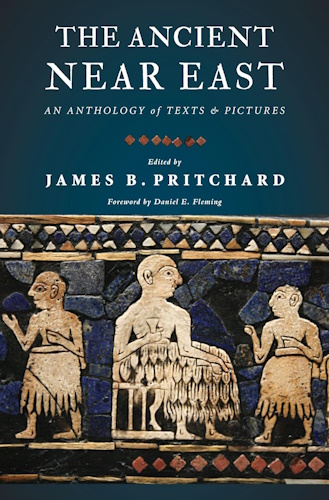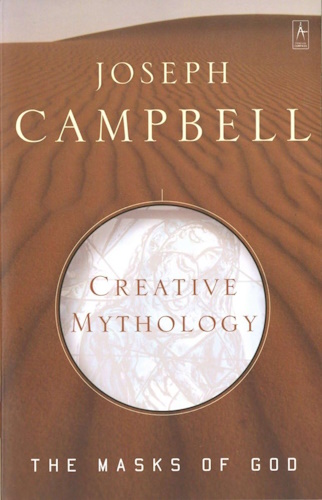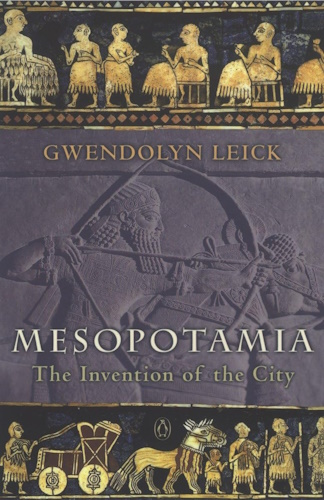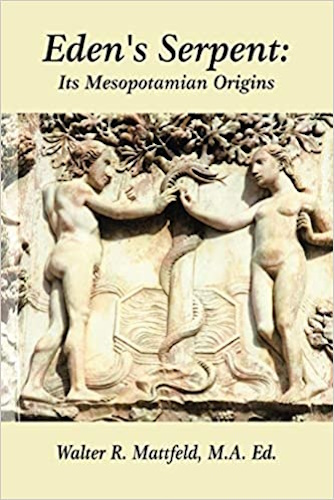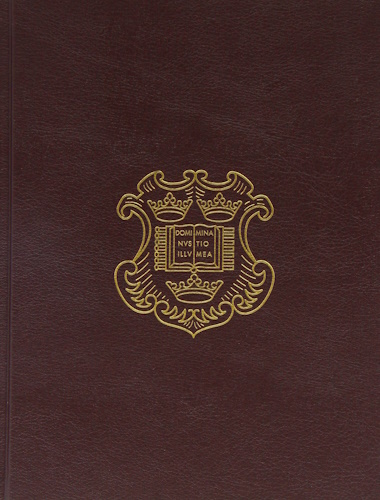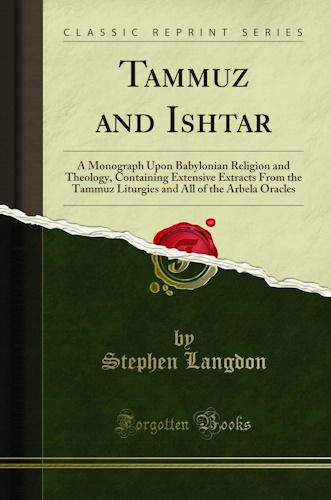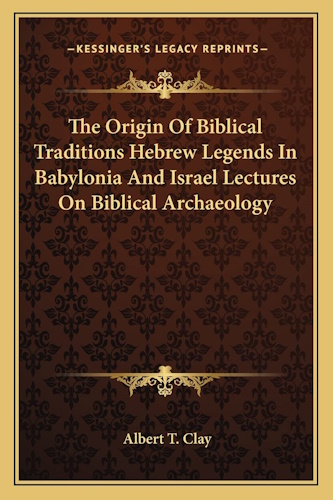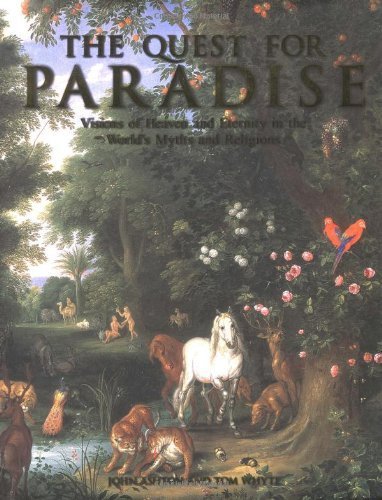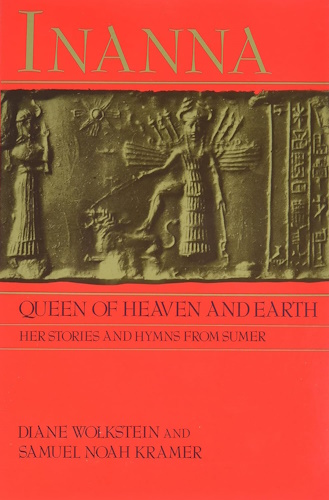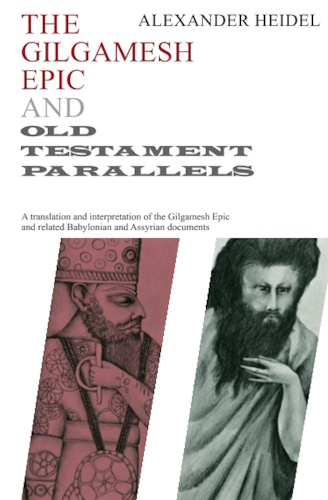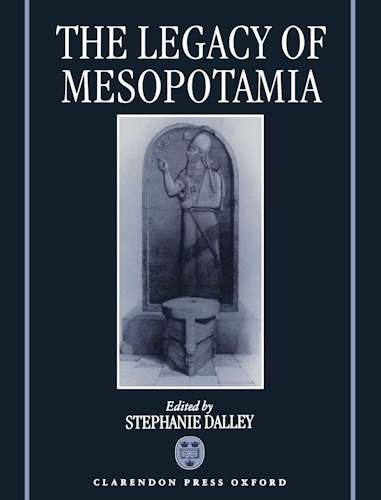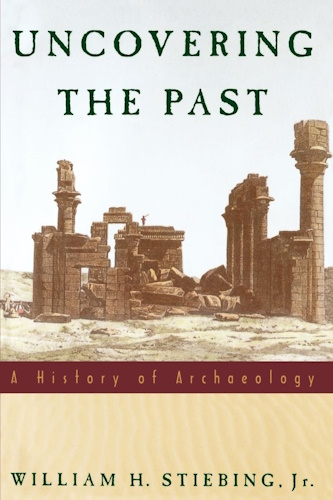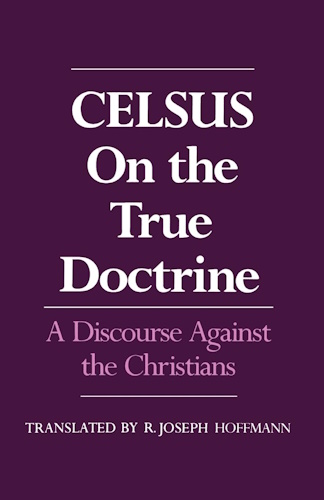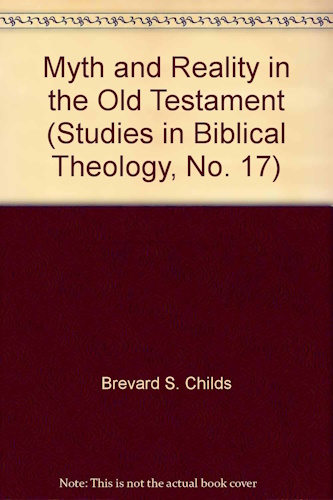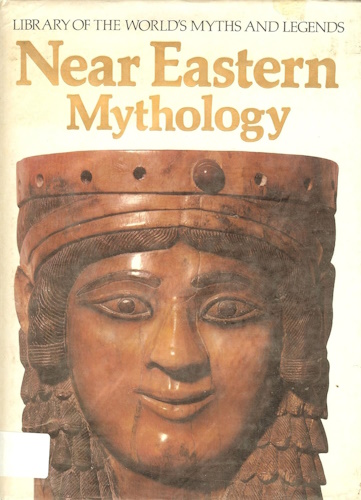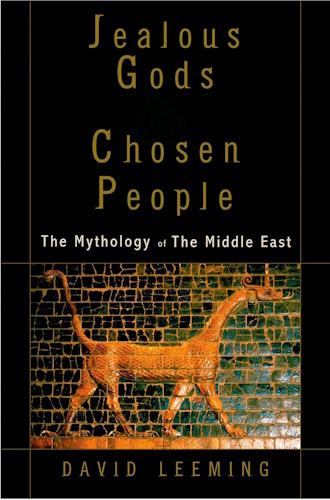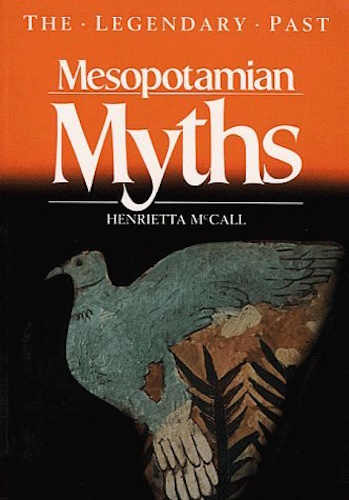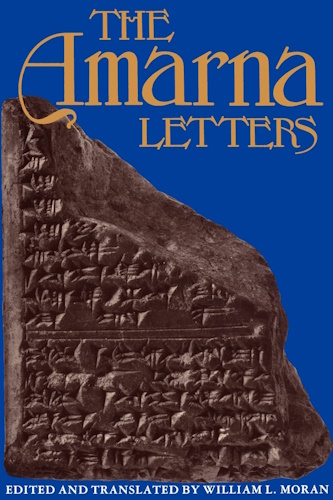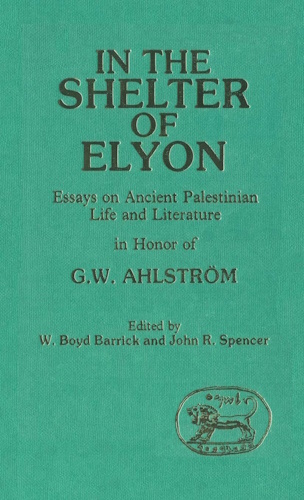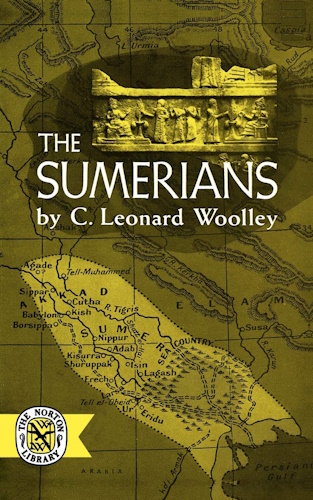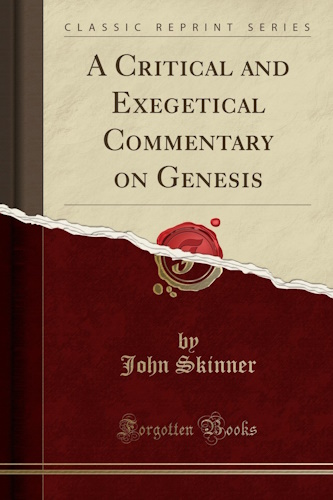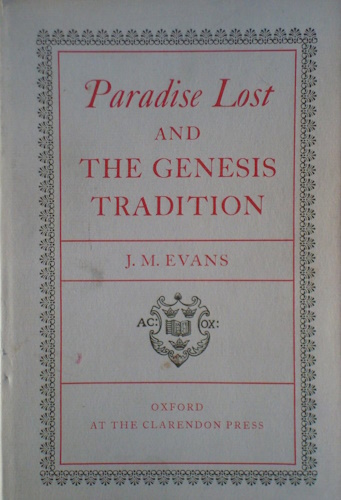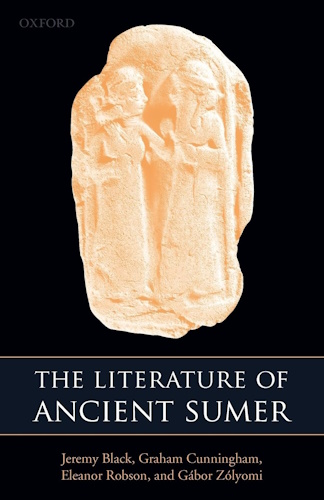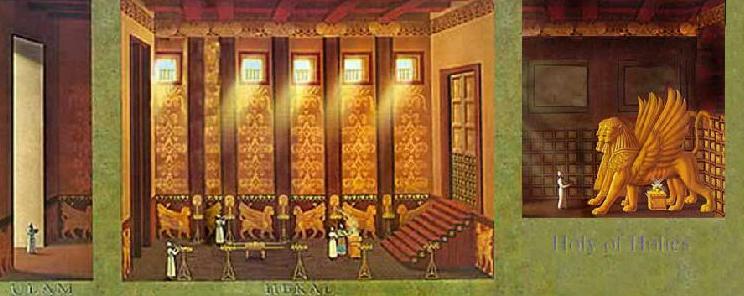![]()
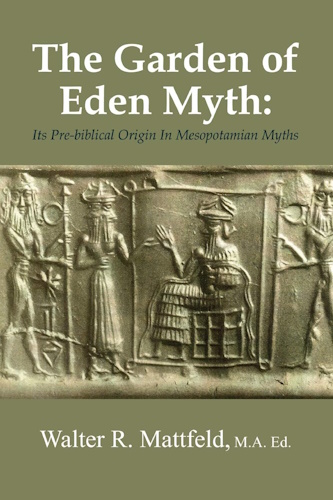
Bible Origins
Dating the Pentateuch
via
Hebrew as a Language
by
Walter Reinhold Warttig Mattfeld y d la Torre, M.A. Ed.
e-mail contact
27 May 2003
Revisions through: 12 March 2007
![]()
From time to time, a number of inquiries have arisen from laymen about whether or not "a study of the Hebrew language" used in the Bible can "establish when" the Pentateuch (the first five books of the Bible) was written. Professional scholars versed in ancient Hebrew, Canaanite, Aramaic, Akkadian, Egyptian and other languages have pointed out the problem. The "oldest" example of Hebrew from an archaeological context is of the 10th century B.C., the so-called Gezer Stone, inscribed on limestone, it lists the months of the year by the tasks to be performed (cf. Vol.3. p.96. Mark D. McLean. "Hebrew Scripts." David Noel Freedman, Editor. The Anchor Bible Dictionary. New York. Doubleday. 1992)
The biblical text suggests for many Conservative-Fundamentalist scholars that Moses wrote the Pentateuch ca. The 15th century B.C., cf. 1 Kings 6:1, which suggests an Exodus ca. 1446 B.C. said date being found in King James Bibles and computed ca. 1650 A.D. by Archbishop James Ussher of Ireland and placed in the margins of said Bibles in the 18th century. The Roman Catholic Bibles, in contrast, being descended in part from the 3rd century B.C. Greek written Septuaginta Bible, preserve a date for the Exodus of 1512 B.C.
The problem? Scholars have determined that Hebrew, which possesses 22 letters is probably a "descendant" of ancient Northwest Semitic of the 18th-15th centuries B.C. In this era 30 to 27 letter forms are in use.
If Moses "really" wrote the Pentateuch (the first five books of the Primary History) in the 16th or 15th century B.C., his writing would be in a form known as Proto-Sinaitic, found on stone tablets in the Southern Sinai in association with Egyptian mining areas of the 15th century B.C. (also found in Canaan in earlier centuries, the 17th-15th B.C.). Thus Moses would have employed 27 consonants in his writing style, as well as differing "inflectional endings," but we don't find them in use or even as archaically preserved snippets of verses or even an occasional archaic word. The Pentateuch's very language indicates it CANNOT be a document of Moses' days and the 16th/15th century B.C. I have already noted that the study of sites mentioned in the Pentateuch and the Book of Joshua reveal that some did not come into existence until the late 7th century B.C., revealing that the Primary History was written no earlier than this period.
The late Professor Albright on Proto-Sinaitic (Emphasis mine):
"First, the fact that the early Semitic alphabet was purely consonantal, was proved by the agreement of the early Phoenician inscriptions from Byblos, published since 1923...Second, Max Burchardt and others had demonstrated from Egyptian transcriptions that early Northwest Semitic still distinguished several phonemes that had coalesced with other sounds in later periods. This view was confirmed by the discovery and decipherment (1930) of Ugaritic, which had 27 consonantal graphemes besides two additional signs for `aleph and a second samekh. It was further supported by the discovery of the Ugaritic abcedaries and other texts, which proved that 5 consonants were lost about the 13th century B.C., leaving precisely the 22 Phoenician-Hebrew consonants in place of the older 27...Meanwhile the Proto-Sinaitic texts, which had been rather isolated, were joined by early alphabetic inscriptions from Syro-Palestine which were clearly earlier or later than the Proto-Sinaitic forms. Since these new finds could be dated archaeologically to the Late Middle Bronze (Gezer, Lachish) or the Late Bronze Age (Shechem, Lachish, etc.), they served to confirm Petries dating of the Proto-Sinaitic material in the 15th century B.C., on the basis of Egyptian finds at Serabit el-Khadim. This approximate date enables us to use evidence from historical linguistics, especially in the light of Ugaritic and other nearly contemporary material. The Sinaitic texts clearly antedate the loss of inflectional endings (preserved in Ugaritic and in Amarna Canaanite) and the accompanying shift in accent...Since the Proto-Sinaitic texts are not themselves homogeneous paleographically, but show a marked evolution in their script, we may tentatively date them between ca. 1550 and 1450 B.C. -probably between 1525 and 1475 (see below). This general date is confirmed by the Lachish prism, as shown above. The evidence from paleography is now more significant than all other data in this respect."
(pp. 5-7. William Foxwell Albright. The Proto-Sinaitic Inscriptions and Their Decipherment. Cambridge, Massachusetts. Harvard University Press. 1966)
I realize that Conservative-Fundamentalists could argue that Moses in the 16th/15th century B.C. wrote the Pentateuch using 27 consonants, but that a later redactor (editor) "modernized" his work, using 22 consonants and "updated" the narrative for his audience by slipping in the names of villages and cities which existed no earlier than the 7th century B.C.
Of interest, here, is a comment made by Professor Clay back in 1919, to the effect that in his day (and the same holds true today), NO INSCRIPTIONS EXISTED ATTESTING TO HEBREW AS A LANGUAGE BEING IN EXISTENCE IN THE 2nd MILLENNIUM B.C., he noting that a number of nations were employing Akkadian (Babylonian) cuneiform as a syllabary or writing medium, but that one could detect the local language being represented by this foreign medium. Of special interest here, is that although Clay was well acqainted with the Amarna correspondence (letters on Clay tablets from Canaanite vassals to Pharaoh Akhenaten, ca. 1350-1334 B.C.), NO HEBREW LANGUAGE EXISTED! If the Hebrews had conquered Canaan by 1406 B.C. (cf. 1 Kings 6:1) why are letters from Shechem (where Joshua assmbled the tribes to swear loyalty to Yahweh, Joshua 24:128) being writing in a Canaanite dialect and NOT IN HEBREW?
Professor Clay (Emphasis mine):
"There are many Hebrew words in the Amarna letters. Some (aside from the personal names) are found in the Cappadocian and other tablets written in the Babylonian language, BUT NOT A SINGLE TABLET KNOWN TO THE WRITER CAN BE SAID TO BE WRITTEN IN HEBREW IN THE BABYLONIAN SCRIPT OR SYLLABARY. Let us repeat. Other peoples, like the Hittites, Mitannians, and Vannic peoples used the Babylonian syllabary for their languages. This was known throughout Amurru, of which we have much evidence. WHY IS IT THAT NOT A SINGLE TABLET HAS BEEN FOUND AS YET IN PALESTINE, MESOPOTAMIA, OR BABYLONIA WRITTEN IN THE HEBREW LANGUAGE?"
(p. 64. Albert T. Clay. The Empire of the Amorites. New Haven. Yale University Press. 1919)
Shlomo Izre`el noted that ALL of the Amarna letters from Canaan reveal a "Canaanite vernacular" being spoken, apparently he is unaware of any Amarna letters from Laba`yu of Shechem revealing Hebrew being spoken (Emphasis mine):
"In general, the farther south in Canaan an Amarna letter originated, the more remote is its language from Akkadian, and the closer it is to the CANAANITE VERNACULAR of that region."
(p. 2418. Vol. 4. Shlomo Izre`el. "The Armarna Letters From Canaan." Jack M. Sasson. Editor. Civilizations of the Ancient Near East. Peabody, Mass. Hendrickson Publishers. 1995. 2000. 4 vols. in two books)
Demsky understands that the earliest "Hebrew" script is no older than the 9th century B.C. (the example he gives is actually the Mesha Stele's Moabite inscription, not Hebrew) (Emphasis mine):
"The alphabet went through various stages before it became a widespread medium of communication in early antiquity...The relatively long formative period of some five hundred years in the development of the Proto-Canaanite script was probably caused by the cultural and socio-political factors bearing upon writing in Canaan during the Middle Bronze IIB-Late Bronze periods. The Canaanite city states were small administrative units, dominated politically and culturally by the great civilizations of Egypt and Mesopotamia and their northern neighbors, particularly the Hittites. The dependence of the conservative Canaanite scribal class upon the imperial writing systems further inhibited the development of the alphabet. However, during this period there was some local experimentation which produced some yet undeciphered scripts (Byblian pseudo-hieroglyphic, Balu'ah inscription and the Deir `Allah tablets). The Canaanite alphabet, radically different in conception and facility, became the most widespread and tenacious of the local scripts among the northwest Semites of the second millennium. The earliest of these alphabetic inscriptions is probably the pictographic klb from Gezer dated between 1700-1600 B.C.E.
(pp. 5-7. Aaron Demsky. "Writing in Ancient Israel and Early Judaism: The Biblical Period," in Martin Jan Mulder & Harry Sysling, editors. Mikra, Text, Translation, Reading and Interpretation of the Hebrew Bible in Ancient Judaism and Early Christianity. 1988. Van Gorcum, Assen/Maastricht & Fortress Press, Philadelphia)
In addition, the small corpus of less than forty inscriptions from Serabit el Khadim and its environs in south Sinai provides us with _a full signary of some THIRTY LETTERS_. This system of writing was recognized as alphabetic writing of a Canaanite dialect and has been termed Proto-Sinaitic. There has been some discussion as to its date and position in the history of the alphabet. While most scholars accept a date around 1500 B.C.E. (Eighteenth Dynasty) others have argued for an earlier ca. 1800 B.C.E. date during the Twelfth Dynasty. Since the south Sinai mines were worked over a long period of time, archaeological evidence can be brought in support of both dates. However, an earlier date would assume an unsupported theory that the alphabet was already invented in the Middle Bronze I period. The use of a highly pictographic alphabet in south Sinai has yet to be properly explained. It cannot be assumed that these mines were the source of inspiration of the alphabetic idea, i.e., the missing link with Egyptian script, nor can it be that this script was the invention of a supposed Canaanite slave labor force at this site. It is more than likely that the Semites writing Proto-Sinaitic were freemen, probably Canaanite merchants residing there. It is quite plausible therefore that the so-called Proto-Sinaitic alphabet was current in certain areas of southern Canaan like the Shephelah (Gezer, Lachish) or perhaps those cities bordering the Negeb from Gaza in the west to Hormah in the east. (p. 7. Demsky)
One of the the most interesting early developments was the application of the alphabetic principle to a cuneiform script written with stylus on clay tablets. This is no doubt the work of Canaanite scribes who perceived the advantages of the alphabetic principle combined with the status of cuneiform, studied in all the major centers of the ancient Near East. It is therefore not surprising that the main corpus of the cuneiform alphabet has been found at Ugarit and its environs, where there were intense demands on writing in five known languages. The Ugaritic alphabet, made up of thirty characters was used to write letters, administrative documents and especially Canaanite poetry and mythology.
This alphabet followed the basic letter order known from the later Phoenician alphabet, plus some five graphemes reflecting the full Semitic phonemic system (cf. classical Arabic). The scribes added another three letters to meet their needs for further precision. A variation on this system was already found in the Ugaritic archives, where a reduced cuneiform alphabet, written right to left represented a south Canaanite dialect. Other examples of the cuneiform alphabet have been found at such Canaanite sites as Beth-Shemesh, Taanach, Mt. Tabor and Sarepta, north of Tyre, as well as at Kamid el Loz in the Beqa'a. We may assume that alphabetic cuneiform was widespread among Canaanite scribes who used it for local administrative and literary needs. It disappeared with the destruction of Ugarit ca. 1200 B.C.E. and a bit later in the south, a victim of the new order which wiped away the direct Mesopotamian and Egyptian political and cultural domination.
During the thirteenth-twelfth centuries, we find more inscriptions in proto-Canaanite, though generally in fragmentary form. However, some are probably votive in nature like the Lachish ewer deciphered by Cross: mtn: sy [lrb]ty 'alt. i.e., 'Mattan. An offering to my Lady 'Elat,' as well as the Lachish bowl and bowl from Qubur el Waladah, near Tel el Far'ah in the Negeb. Other inscriptions might be of an administrative nature, like the Beth-Shemesh ostracon and the Radana handle. The ostracon from 'Izbet Sartah near Tel Aphek was a writing excercise containing the earliest example of the twenty-two letter linear alphabet. It is noteworthy that it was incised from left to right and reflects a local tradition, which transposed the letter order to het-zayin and pe-'ayin.
During the first half of the first millennium B.C.E., three national scripts developed in Syria-Palestine from Proto-Canaanite: Phoenician, Hebrew and Aramaic. The former script was used by the Phoenicians on their mercantile ventures around the Mediterranean as early as the eleventh century, as is evidenced by inscriptions from Nora and Crete. By the ninth century it received the distinction, along with the Tyrian dialect, ofbecoming the medium of monumental inscriptions of local rulers (Kilamuwa of Samal [Zengirli] and Azitawada in Cilicia). With some minor variation it was later found in the western colonies, principally in Carthage, and is termed the Punic script.
The Hebrew script, first documented in the ninth century, was more restricted to the two Israelite Kingdoms and their periphery (Mesha Stele). During the period of the First Commonweath it did not change much. It continued to be used in Second Temple times, but by the third century B.C.E. it was superceded by the Jewish script (i,e. the so-called 'square' or 'Assyrian' script) which developed from the Aramean signary.
The Aramaic script had a greater circulation and was the least conservative in its development, especially once this script along with the spoken language (cf. 2Kgs 18:26), became the international means of communication adopted by the Neo-Assyrian empire. While the known Aramaic inscriptions of the ninth century are clearly local adaptations of the Phonecian script, the recently found contemporary Tel Fekheryeh inscription uses archaic signs sometimes closer to the 'Izbet Sartah ostracon of the twelfth century B.C.E., indicating a more direct link with Proto-Canaanite. Only in the Hellenistic period, when Aramaic was no longer the official language of the government, do we begin to note the more rapid evolution and diversification of the script into national styles.
The Jewish exiles who returned to Zion from Babylon had adopted customs prevalent in the gentile environment where they had lived. They used the Babylonian month names (e.g. Nisan, Tishri, Kislev), and assumed foreign names (e.g., Mordecai, Esther, Zerubbabel). Alongside the Hebrew language and script, they began to use the Aramaic script and language. Some of the letter names were given Aramaic equivalents (e.g., zayin, resh).
By the third century B.C.E., a local Jewish script with its own characteristics developed out of the standard Aramaic. It is documented in some early biblical manuscripts from the Dead Sea Scrolls. The Rabbis, attributing this square script to Ezra, called it k'tav ashuri meaning either 'Assyrian script,' noting the historic circumstances of its foreign derivation, or the apologetic 'authorized script' (me'ushar). It ultimately supplanted the Old Hebrew script..." (pp.9-10. Demsky)
Contra Demsky, McClean understands that the Gezer stone is the oldest example of Hebrew script, dating it to the 10th century B.C.:
"To prevent confusion and to establish a common terminology, the definitions proposed by F. M. Cross (1961b: 189-90, nn. 4-5) have been adopted. Hebrew script refers to the original Hebrew letter forms derived from the Phoenician alphabet and used throughout the First Temple Period...The surviving examples of the Hebrew script were inscribed on durable materials such as stone, gems used for seals, jar handles, or clay bullae impressed by seals or written on ostraca with a carbon or iron salt ink. At present there is only one example of Hebrew script written on papyrus, found at the Wadi Murabba`at. It is dated on the basis of paleographical evidence to the mid-7th century B.C.
Some of the more important inscriptions include the Gezer Stone, the Siloam Inscription, and the tomb of the Royal Steward. The Gezer Stone is an agricultural calendar from the 10th century B.C. inscribed on limestone. It lists the months of the year by the tasks to be performed in that time period. The Siloam Inscription (late 8th century B.C.) records the joining of the tunnel of the acqueduct dug by Hezekiah to provide water for Jerusalem in the event of a siege. The tomb inscription of the Royal Steward is from the same period and records the plea of the Steward to would-be grave robbers to leave his tomb alone as it contains no treasures, but simply the bones of him and his handmaiden."
(p. 96. Vol. 3. Mark D. McLean. "Hebrew Scripts." David Noel Freedman. Editor. The Anchor Bible Dictionary. 1992. Doubleday-Anchor. New York)
Conservative-Fundamentalist scholars have argued that "Lack of evidence is NOT proof an event did not occur." They note that the Egyptians were using papyrus in the 15th century B.C., Moses' days, and thus suggest he may have used perishable materials. They have also noted murals of the Neo-Assyrian period on palace walls showing two Assyrian scribes taking diction, one has a stylus and clay tablet, the other holds a lengthy piece of either papyrus or parchment to write on, NO papyrus or parchment documents of this era has ever been found. Thus for some scholars the "absence of Hebrew" can be explained away by perishable materials.
The Bible suggests that eventually the Hebrews came to intermarry with the Canaanites and worship their gods. If this observation is correct then it is just possible that Canaanite fathers and mothers taught their "Israelite" sons and daughters their language, which was Canaanite.
Judges 3:5-7 RSV
"So the people of Israel dwelt among the Canaanites...and they took their daughters to themselves for wives, and their own daughters they gave to their sons; and they served their gods."
We are told that by Hezekiah's days the Jews at Jerusalem did not understand Aramaic. Yet, their ancestor, Jacob was described as a wandering Aramean ready to perish, who went down to Egypt and became there a great nation (De 26:5). Could the reason for Judaeans "loosing" their Aramaic language be due to their being assimilated by the Canaanites? They not only married Canaanites and worshipped their gods, they apparently also lost their Aramaic language and spoke and wrote in Canaanite?
2 Kings 18:26-28 RSV
"The said Eliakim the son of Hilkiah, and Shebnah, and Joah said to the Rabshakeh, "Pray, speak to your servants in the ARAMAIC language, for we understand it; do not speak to us in the language of Judah within the hearing of the people who are on the wall."
If the Bible is correctly recalling events, then apparently Hebrew by Iron II (ca. 1000-587 B.C.) is in reality a fusion of Aramaic and Canaanite. Isaiah spoke of praise being rendered to God NOT in Aramaic (Abraham's and Jacob's tongue?) but in Canaanite:
Isaiah 19:18 RSV
"In that day there will be five cities in the land of Egypt which speak the LANGUAGE OF CANAAN and swear allegiance to the LORD of Hosts..."
If Jacob is an Aramean and a Hebrew, then his Hebrew language was Aramaic, but according to the narrator of 2 Kings 18:26-28, Judaeans do NOT understand Aramaic, and Isaiah suggests they speak "Canaanite", ergo the Bible as we have it, is NOT written in Aramaic Hebrew, but Canaanite Hebrew, a result of Hebrews intermarrying with Canaanites as noted (above) in Judges 3:5-7.
Professor Dever, arguing that the Iron I settlements in Canaan's hill country, Galilee to the Negev, are "proto-Israelite," notes in passing that Hebrew is a dialect of Canaanite:
"But, in fact, the 'Izbet Sartah stratum pottery is virtually identical to that of stratum XIV at Late Bronze Age Gezer, a typical Canaanite site, only 10 miles away. Stratum II, of the twelfth-eleventh century B.C.E., exhibits several fully developed courtyard houses, surrounded by numerous stone-lined silos (figure 2.9). From one of these silos came a five-line ostracon, or inscribed potsherd, the bottom line a complete alphabet (or abcedary) written left to right in proto-Canaanite characters. Here we have another link between 'proto-Israelite' sites and Canaanite culture: script, and in all probability language (Scholars have long known that 'biblical Hebrew' is really a Canaanite dialect.)."
(p. 34. William G. Dever. "Archaeology and the Emergence of Israel." John R. Bartlett. Editor. Archaeology and Biblical Interpretation. London & New York. Routledge. 1997. ISBN 0-415-14114-1 paperback)
On the basis of archaeological findings, as well as endings to historical compositions, I understand along with other scholars, that the "Hebrew" Bible, more specifically, Genesis-2 Kings was composed in the Exile ca. 560 B.C.
It does NOT display ANY archaic features of the Canaanite language found in archaeological contexts of the 16th/15th century B.C. when some Conservative scholars on the basis of 1 Kings 6:1 understand an Exodus to have occurred ca. 1512/1446 B.C. and Moses' having then composed the Pentateuch.
It thus follows that Conservative scholarship _CANNOT_ "date" the Pentateuch to the 16th/15th century B.C. on the basis of a study of the Hebrew language, they can only offer "arguments from silence," that is to say, "Just because there is no archaeological evidence of the existence of a Hebrew language resembling that preserved in the Bible doesn't mean Moses couldn't have wrote it."
Based on these anomalies in the archaeological record, "some" Conservative scholars are willing to _concede_ that the Hebrew in the Bible, as it has come down to us, "may" be a late form of Hebrew from the 8th-6th centuries B.C., but they would argue that all this means is that a later scribe probably "updated" the archaic texts of a 16th/15th century Moses into a more readable Hebrew. The actual "script" or letter forms of the present day Hebrew Bible, the so-called "Aramaic script," is a product of thePost-Exilic period (4th century B.C.) and the _only_ preserved "archaic relic" example of an earlier form of script is the sacred tetragram yhwh (Yahweh) which is attested in 8th/7th century B.C. inscriptions referred to as "paleohebrew." To date, the "oldest" -in ink- examples of any verses from the Hebrew Bible is of the mid 3rd century B.C., found in association with the Dead Sea scrolls near Qumran.
Boorstin on "the science" or "principals" of forgery detection:
"In reply to Papebroech, Mabillon wrote his De Re Diplomatica ("On the Study of Medieval Charters," 1681, 1704), which developed diplomatics into a subtle and comprehensive technique for authenticating old documents. The Jesuit Papebroech had cast suspicion on the Merovingian documents because of their peculiar lettering. In reply, Mabillon for the Benedictines explained that over the centuries scripts had changed as much as the events they recorded. He illustrated Latin script from the capital letters of ancient Rome down to the handwriting of the seventeenth century. Surveying the whole range of clues, he opened the "auxiliary" sciences of handwriting (paleography), writing materials, seals (sphragistics), dates (chronology), and vocabulary (philology). Along with his principles for sifting historical evidence, he insisted quite sensibly that the genuiness of a document depended on the consistency of all clues. Papebroech himself finally had to admit that Mabillon's principles were correct, and Mabillon's book became a classic for future historians." (p. 579. "Opening the Past." Daniel Boorstin. The Discoverers, A History of Man's Search to Know His World and Himself. New York. Vintage Books [Random House]. 1983. ISBN 0-394-72625-1. paperback)
As noted above, some Conservative scholars understand Moses wrote the Pentateuch (the first five books of the Bible) sometime in the course of the 16th/15th century B.C. The problem? The script of that era as it survives in archaeological contexts is quite different from the Hebrew script appearing in the earliest examles we have of the Pentateuch from the 3rd/2nd centuries B.C. (found in association with the Dead Sea Scrolls at Qumran and vicinity). The 18th-15th century B.C. Proto-Sinatic possessed a full signary of some THIRTY LETTERS, while the Ugaritic alphabet employed some 27 letters which by the 13th/12th century had been reduced to 22, and it is _only 22 consonants_ that appear in the Pentateuch. The "inflectional word endings" associated with the surviving 18th-15th century B.C. archaeological examples do _not_ appear in the Pentateuch.
The findings of archaeology have revealed that some sites which appear in the Pentateuch did not come into being until the 8th-7th centuries B.C. (as for example Edomite Bozrah, Arabic Buseira of Ge 36:33).
Using Mabillon's above observation that "the genuiness of a document depends on the CONSISTENCY OF _ALL_ ITS CLUES," I conclude that the Pentateuch was NOT written by Moses in the 16th or 15th century B.C., it is a later composition. I have dated it to ca. 560 B.C. and the Exile, for the reasons why please click here.
As earlier noted, some Christian apologists argue that these "anomalies" only mean that Moses' text was "rewritten or edited" by a later redactor in a form of Hebrew in vogue of circa the 8th-6th centuries B.C.. The absence of any written examples of Hebrew for the 16th-15th centuries is explained-away by claiming it was written on perishable materials (parchment) and it is therefore unrealistic to expect any examples to survive of that era.
Claims have been made by some Conservative scholars that Moses "wrote" the Pentateuch, the first five books of the Bible (Genesis, Exodus, Leviticus, Numbers, Deuteronomy). The problem? The texts suggest otherwise. Many of the passages in which Moses appears (Exodus through Deuteronomy) present Moses in the "third-person" not the "first-person" form of narrative. It is _highly unlikely_ that Moses, if writing these texts would refer to himself in the "third-person" as for instance: "Moses said," Moses went in," "Moses did," "Moses ascended," etc. It obvious that someone other than Moses is writing these accounts and thus refering to Moses in the "third-person form." Some verses in the third-person form:
One day, when Moses had grown up...(Ex 2:11)
Then Moses was afraid...(Ex 2:14)
Now Moses was keeping the flock of his father-in-law, Jethro...(Ex 3:1)
And Moses said, "I will turn aside and see this great sight..." (Ex 3:3)
Then the Lord said to Moses...(Ex 10:1)
Then Moses called all the elders of Israel...(Ex 12:21)
On the morrow Moses sat to judge the people...(Ex 18:13)
The Lord called Moses and spoke to him...(Lev 1:1)
The Lord spoke to Moses in the wilderness of Sinai...(Nu 1:1)
On the morrow Moses went into the tent of the testimony...(Nu17:8)
Moses heard the people... (Nu 11:10)
These are the words that Moses spoke to all Israel beyond Jordan in the wilderness...(De 1:1)
And Moses went up from the plains of Moab to Mount Nebo...(De 34:1)
Had Moses been the "real" author he would have used the "first-person form" as for example:
"I went in," "I saw that..." "I climbed Mount Sinai..." "I replied that..." "I argued that..." " I sat down to judge the people," "The Lord spoke to me" "In my fury I cast down the two stone tablets with the law written on them.."
There are indeed a few occasions that Moses speaks in the "first-person form" using the word "I" but this usually introduced or preceded by a "third-person format" as for example:
"Moses said: "I will turn aside and see this great sight, why the bush is not burnt."
(Exodus 3:3 RSV)
Because of these "third-person anomalies" some Conservative scholars have conceded that Moses did not write these texts, someone at some later point in time has apparently edited or recast Moses' original account. "When" was this "editor" or "redactor" living? Some of the "clues" are found in statements scattered about in the Pentateuch.
Mention is made of the Edomites possessing kings before Israel had kings (Ge 36:31). Israel's first king was Saul (reigned circa 1020-1000 B.C.), then David (reigned 1000-965 B.C.), so obviously, the author of the Pentateuch wrote some time in the Kingdom period, after David.
Another "clue" is the mention of Bozrah (Ge 36:33). Excavations at Buseirah believed to have been an Edomite capital, revealed that its architectual foundations are no earlier than the 8th century B.C., which places the Pentateuchal author no earlier than this century.
Another "clue" is that in mentioning the major cities of Assyria, Nineveh is given pride of first mention before Calah and Resen (Ge 10:10). When Moses was living (the 16th or 15th century B.C.) Assyria's capital was the city of Asshur, which is not mentioned in the Bible anywhere. It was followed by Calah in the 10th century B.C. which in turn was followed by Nineveh in 704 B.C., which came to an end in 612 B.C. Nineveh's being given the honor of "first mention" suggests it was the "foremost city" of Assyria at the time of Genesis' writing, so the author of the Pentateuch lived some time after 704 B.C.
The "final clue" as to when the Pentateuch was written is found in 2 Kings 25:27 which mentions the release from prison in Babylon of the Jewish monarch King Jehoiachin by the Babylonian monarch King Evil-Merodach (Babylonan: Amel-Marduk). Scholars date Evil-Merodach's reign to circa 562-560 B.C. A number of scholars have suggested that Genesis-2 Kings is a _unified history_ of Israel from the beginnings of the world to her exile and the last "datable clue" reveals this _unified history's_ composition is circa 562-560 B.C. and the Exile.
Dalley has suggested that the many parallels found in the Hebrew Bible with Mesopotamian motifs and concepts can be accounted for to some degree in that Late Bronze Age Canaan possessed scribes trained in the writing of Sumerian, Akkadian and Canaanite using the medium of cuneiform on clay tablets (As part of their training these scribes read literary works in Sumerian and Akkadian). She noted such scribes existed at Jerusalem as late as the 14th century B.C. (Tablets from Jerusalem found at Tell Amarna, Pharaoh Akhenaten's capital, ca. 1350-1334 B.C.). She suggests that bas reliefs found of the Neo-Assyrian period show two scribes, one writing on clay with a stylus and the other on parchment with a pen might reflect the fact that there was a period when alphabetic scripts were written on perishable materials while their cuneiform counterparts were preserved on baked clay.
Dalley:
"During the Bronze Age the inhabitants of Palestine used the writing techniques and training that had originally developed in Mesopotamia. At that time methods of translation evolved to convert text from one language to another in cuneiform script. When the Hebrews settled in cities they began to use an alphabetic script to record their national literature, adapting older forms of composition, and converting pagan rituals to their special social and religious requirements.
Jerusalem contained literate men in the Amarna period who could read and write Akkadian, and who had been trained with gems of Mesopotamian literature. In the Early Iron Age the city kept records such as royal annals, according to clear statements in the Bible, and was continuously inhabitated while the gradual change took place from cuneiform to alphabetic writing...An unbroken tradition of scribal activity explains why so many general comparisons can be made between Akkadian and biblical literature...Early in the Iron Age scribes for cuneiform and for alphabetic Aramaic worked side by side as they are shown on neo-Assyrian relief scupture...Signs of influence can be found in many parts of the Bible. The training of scribes is the key to many of the resemblances between Mesopotamian texts and biblical passages. When the Hebrews created their unique literature and institutions they used for some of the building blocks the ancient traditions which emanated from their older, wealthier, and more powerful neighbours in the East."
(p. 79. Stephanie Dalley. "The Influence of Mesopotamia Upon Israel and the Bible." pp. 57-83. Stephanie Dalley. Editor. The Legacy of Mesopotamia. New York. Oxford University Press. 1998. Reprinted 2005. ISBN 0-19--929158-6. paperback)
![]()
![]()
Disclaimer:
Some material presented will contain links, quotes, ideologies, etc., the contents of which should be understood to first, in their whole, reflect the views or opinions of their editors, and second, are used in my personal research as "fair use" sources only, and not espousement one way or the other. Researching for 'truth' leads one all over the place...a piece here, a piece there. As a researcher, I hunt, gather and disassemble resources, trying to put all the pieces into a coherent and logical whole. I encourage you to do the same. And please remember, these pages are only my effort to collect all the pieces I can find and see if they properly fit into the 'reality aggregate'.
Personal Position:
I've come to realize that 'truth' boils down to what we 'believe' the facts we've gathered point to. We only 'know' what we've 'experienced' firsthand. Everything else - what we read, what we watch, what we hear - is what someone else's gathered facts point to and 'they' 'believe' is 'truth', so that 'truth' seems to change in direct proportion to newly gathered facts divided by applied plausibility. Though I believe there is 'truth', until someone representing the celestial realm visibly appears and presents the heavenly records of Facts And Lies In The Order They Happened, I can't know for sure exactly what "the whole truth' on any given subject is, and what applies to me applies to everyone. Until then I'll continue to ask, "what does The Urantia Book say on the subject?"
~Gail Bird Allen
![]()
![]()

